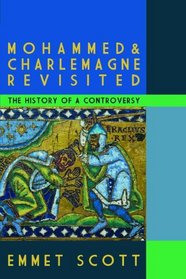Search -
Mohammed and Charlemagne Revisited: The History of a Controversy
Mohammed and Charlemagne Revisited The History of a Controversy
Author:
During the 1920s Belgian historian Henri Pirenne came to an astonishing conclusion: the ancient classical civilization, which Rome had established throughout Europe and the Mediterranean world, was not destroyed by the Barbarians who invaded the western provinces in the fifth century, it was destroyed by the Arabs, whose conquest of the Middle E... more »
Author:
During the 1920s Belgian historian Henri Pirenne came to an astonishing conclusion: the ancient classical civilization, which Rome had established throughout Europe and the Mediterranean world, was not destroyed by the Barbarians who invaded the western provinces in the fifth century, it was destroyed by the Arabs, whose conquest of the Middle E... more »
ISBN-13: 9780578094182
ISBN-10: 0578094185
Publication Date: 1/15/2012
Pages: 272
Edition: First
Rating: 1
ISBN-10: 0578094185
Publication Date: 1/15/2012
Pages: 272
Edition: First
Rating: 1
4 stars, based on 1 rating
Publisher: New English Review Press
Book Type: Paperback
Members Wishing: 1
Reviews: Amazon | Write a Review
Book Type: Paperback
Members Wishing: 1
Reviews: Amazon | Write a Review




